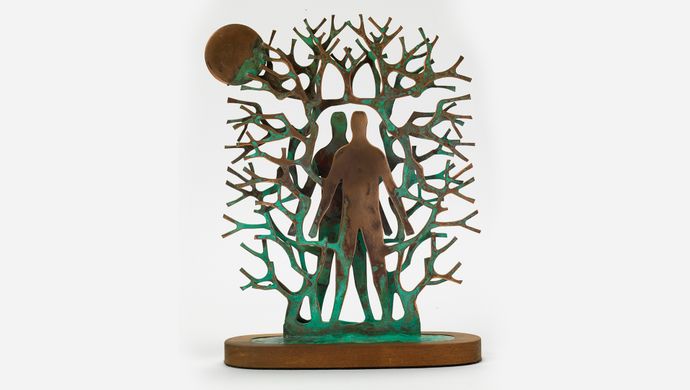 Story
Story
The museum mourns the loss of Satoru Abe
Abe was born in 1926, one year before the opening of the Honolulu Academy of Arts (now the Honolulu Museum of Art). His long relationship with the museum began in 1954, when his work was included in the milestone exhibition of the Metcalf Chateau—a group of seven Asian American modernist artists. The museum’s collection is now home to 38 paintings, sculptures, drawings, and prints by Abe, including the iconic sculpture The Wheel (which is on view outside Gallery 27).
Satoru Abe with his mentee John Koga at the opening of Undulation: rise and fall, recent work by John Tanji Koga at HoMA in 2013.
Satoru Abe with his daughter Gail Goto and grandson Donovan Goto at the opening of his retrospective Reaching for the Sun.
“It has been an honor to get to know Satoru Abe and become familiar with his extraordinary work,” says HoMA Director and CEO Halona Norton-Westbrook. “He has affected the art history Hawai‘i in profound ways.”
Many Hawai‘i artists, such as John Koga, revered Abe for his mentorship and generosity of spirit, encouraging generations of talent on their creative journeys. The elder statesman of art was unendingly curious and never stopped pushing his own envelope and experimenting. He declared he had found a new way of seeing while working on a series of paintings during the pandemic.
After taking art classes as a student at McKinley High School under instructor Shirley Russell, Abe went on to study art in San Francisco and at the Art Students League in New York City. He lived in New York from 1956 to 1970, earning four solo exhibitions at The Sculpture Center. In 1959, his work was included in a group show at the Museum of Modern Art and was featured on the cover of Art in America. He returned to Hawai‘i in 1970, living first in Wai‘anae, then settling in Kaimukī.
Satoru Abe, third from right, with the Metcalf Chateau group at the Honolulu Museum of Art in 1954. They are in the gallery where their work would soon be featured in a group show. Pictured with Abe are, from left, Edmund Chung (not featured in the exhibition), Tadashi Sato, Jerry Okimoto, Abe, Bumpei Akaji, and Tetsuo “Bob” Ochikubo.
Since then, Abe has literally become part of the landscape, with his work on view throughout the state. Generations have grown up familiar with Abe sculptures at their schools, public spaces, and office buildings. In 1998, The Contemporary Museum marked 50 years of his art-making with a retrospective.
The recent HoMA exhibition Home of the Tigers: McKinley High and Modern Art featured work by Abe, and his enduring legacy can be experienced in the current Satoru Abe: Reaching for the Sun, a retrospective that covers seven decades of art.
“We’re grateful to have celebrated Satoru in his lifetime. His creativity was insatiable, he was always talking about his latest works as the pinnacle of his career. Even at the opening of Reaching for the Sun, he was looking for space to put his next paintings,” says Curator of European and American Art Alejandra Rojas Silva, who worked with Abe as co-curator of Home of the Tigers and Reaching for the Sun.
Abe regularly visited the museum up until just a few weeks ago, to see the two exhibitions. The museum is grateful to his daughter Gail Goto whose support for her father made these exhibitions possible.
Abe’s physical presence will be greatly missed, but his creative influence will be felt forever.
Top banner
Portrait of Satoru Abe, Honolulu Museum of Art, 1951.



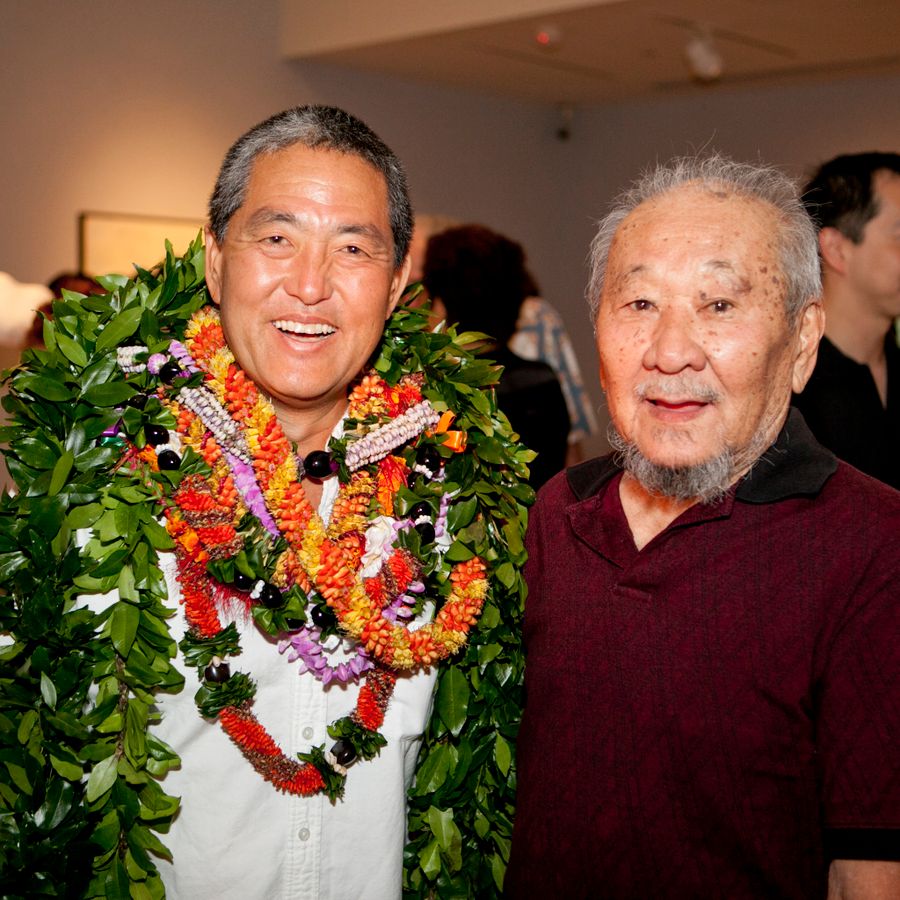
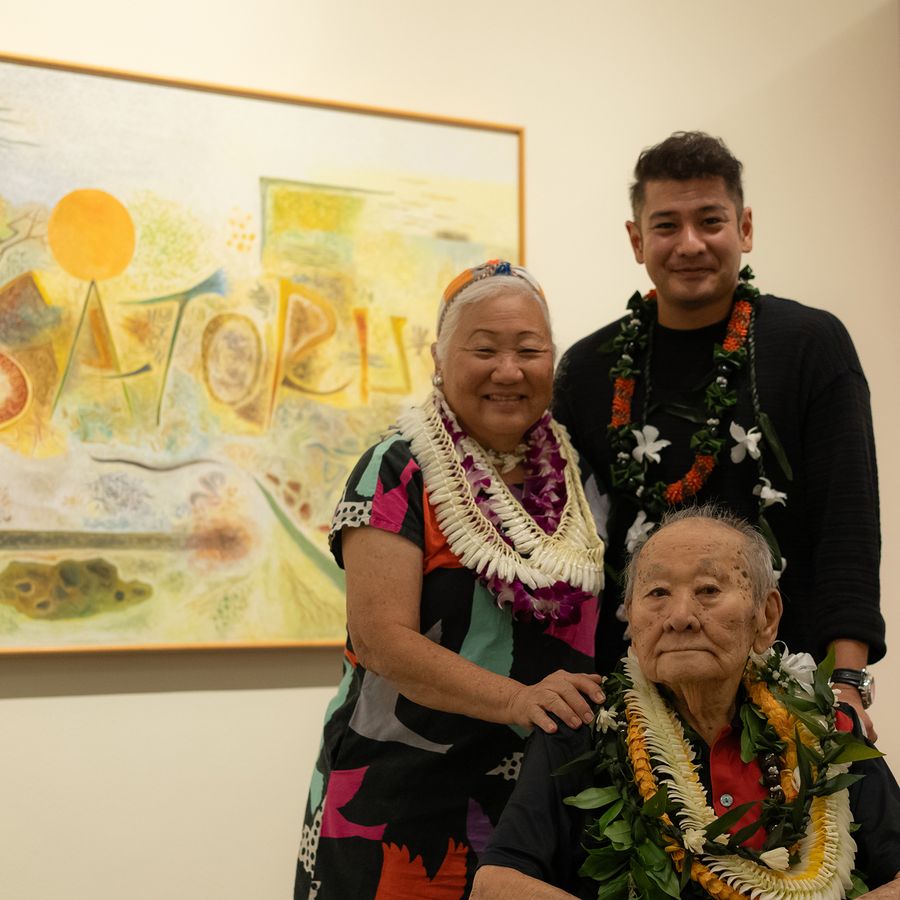
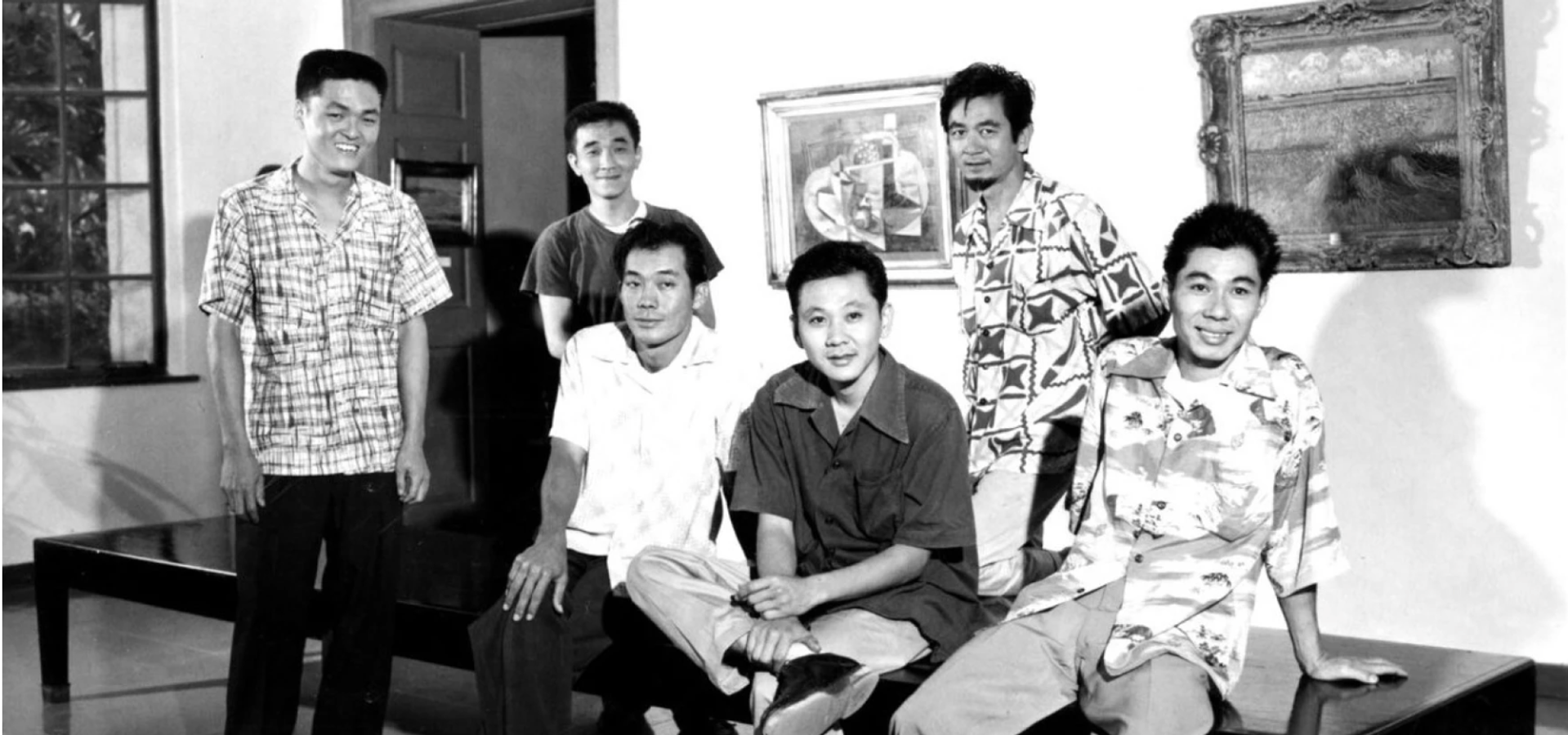

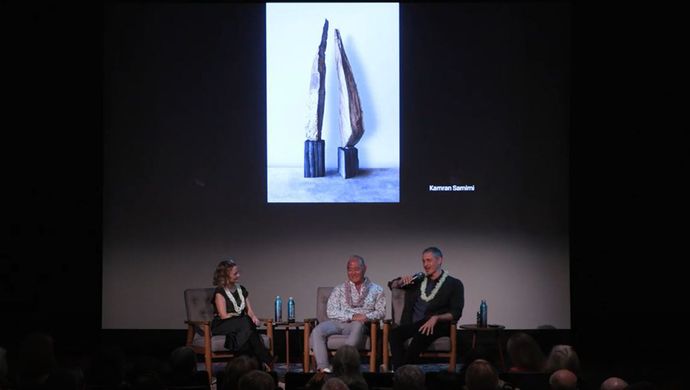
 Video
Video
